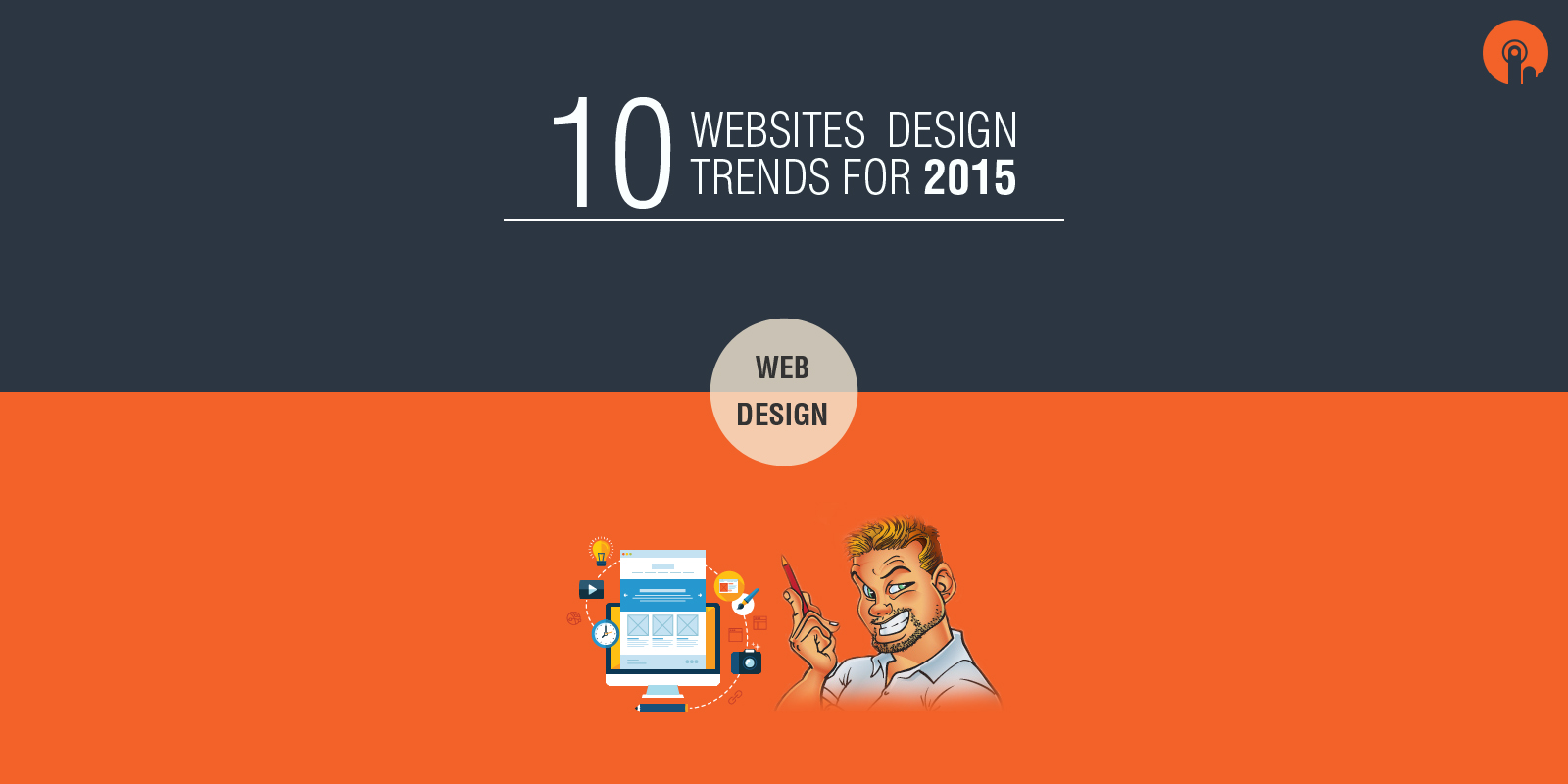
10 Web Design Trends That Will Transform The Web In 2015
The biggest web design trends included: videos, background , flat design ,grid layouts, and the increasing capabilities of HTML5 APIs, in 2014 . So which trends, techniques and technologies will define 2015? Here’s list of 2015, which defining trends. In net magazine’s feature, some ideas are featured.
1.Huge background images
Benjamin Hollway who is Front-end developer expects more massive background images in 2015 By using alongside rich typography and subtle parallax effects, largely due to the lead taken by massive brands such as Google Nexus and Apple.
2.Card-based design
It is said by Creative director Haraldur Thorleifsson that card-based design will be big: “Content needs to fit on different sizes of screen and types, and cards are the easiest way to make that work across platforms.” Director Haraldur Thorleifsson adds this presents a design challenge, since cards can be dull, “but we’re seeing fun, clever takes on this from Big companies like Google”.
3.Digital-first branding
Clearleft founder Andy Budd said that “as more companies realise their customers’ primary experience with them is online, we will see more digital-first-approaches to branding”. Andy Budd predicts companies “ditching traditional branding agencies who treat the web with the same care as a branded mug”, instead “commissioning digital agencies to conceive a brand that works first online before filtering down to other channels.”Ghostly Ferns founder of Meg Lewis ,adds this may result in “more brands with responsive, fluctuating logos,” which will “force designers to think about a logo from ‘big picture’ to ‘minute detail’ as it scales”.
4.Open data
Sally Jenkinson said that open data’s been on the rise, but many digital spaces remain “more closed than ever” and so “leaders such as The Open Data Institute is working to promote more openness”. Clearleft’s Andy Parker said “more public and private companies making data and content available”. This will result in “some pretty spectacular services being created, like the Cern sandbox”.
5.Responsive design – evolved
Designer Victor Erixon (minimalt.se) expects the industry to “continue maintaining simple and minimal aesthetics,” with the web “becoming fully customised for different viewports”.But others see responsive design going further. “Apple Watch, for example, relies on a responsive-like flow to accommodate a small screen, and so while 2015 isn’t the year the web and native become the same, it’ll get us much closer.”
6.Privacy
Designer Laura Kalbag (laurakalbag.com) said that we have long “designed for security, so with their information, people can trust forms and checkouts “. Now, people become aware of how data can be exchanged with third parties, “they will be loath to share it without good reason and rightly so”.
7.Isomorphic JavaScript
Development benefits can be great in terms of speed of development, but there are costs to using this approach. JavaScript is the single biggest point of failure in any web-based product. Unlike on the server side, we do not control the execution of code in the browser.” We will see more use of isomorphic JavaScript, for companies that have heavily invested in JavaScript for their site infrastructure: ” It offers improvements in the areas of performance, maintainability to boot and SEO. Twitter and Airbnb have moved to this approach. ”
8.Iteration
2015’s big trend will be iteration on what we already have: “We just had trends such as responsive and flat design, and it will take time for another big thing to happen.” By contrast, Designer Robby Leonardi sees enhancements on existing technologies and concepts, with increasingly sophisticated better typography ,web layoutsand more designing in the browser.
9.Vibrant design
Google’s Material design specification – intended to combine the texture and tactility of paper and ink with the ‘imagination and magic of digital’ ,will inspire designers. BaseKit co-founder Richard Healy says: “Think graphical,bold and intentional. We are talking vibrant, unexpected colours, contrasted with subdued and muted environments; large-scale typography, soft directional lighting and shadow; the use of responsive design best practices; and meaningful motion – carefully choreographed animation that provides fluid, seamless touch transitions and, more importantly, delights users.”
10.Web components meet adaptive design
Developer Aaron T Grogg thinks “web components and adaptive development will combine to create a new style of web development”. Making decisions on the server regarding mark-up to send a user, usually depending on the device being used. “When you will combine the flexibility of web components and the power of adaptive development, then we are going to see very creative solutions from designers and developers.

